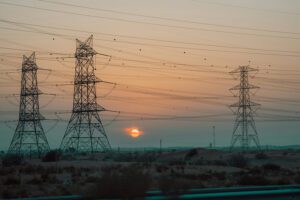Food price increases are coming from all directions—natural disasters likely attributable to climate change, geopolitics, alleged corporate price gouging, and inflation left over from the pandemic.
This year, food prices have not risen as high as in 2022, but consumers are still feeling its effects. The Federal Reserve has raised interest rates 11 times since March 2022 to bring down inflation. However, companies are free to set their own goods’ prices. Food and beverage giants like Coca-Cola, PepsiCo, Unilever, and Nestle have all raised prices this year, making it harder to bring inflation under control.
The issue has become so concerning to policymakers that the U.S. Department of Agriculture (USDA) recently launched a partnership with bipartisan state attorneys general in 31 states to investigate anticompetitive practices contributing to food inflation. According to a press release by the USDA, the program will focus on anticompetitive market structures and practices, consumers’ lack of choices, and conflicts of interest across agricultural supply chains. The agency is also investing “to increase independent meat and poultry processing capacity, expand market opportunities for farmers, and support a growing workforce in rural areas.”
How geopolitics affects food prices
Geopolitical issues are also raising food prices around the world. At the beginning of July, Russia allowed the Black Sea grain deal to expire, impacting vulnerable countries that import Ukrainian grain. The deal allowed Ukrainian grain to be safely exported through its Black Sea port of Odesa. After the deal expired, shelling of the port began and the area is believed to be heavily mined. Even if the grain deal is re-signed, vessels may be wary of relying on the corridor should tensions cause another reversal.
On July 20, India announced a ban on exports of non-basmati rice after this year’s monsoon rains decimated many of the country’s rice paddies. The decision aims to keep cheaper rice options in the country. India is the world’s largest rice exporter, accounting for 40% of the world’s rice exports by volume, according to The Economist. Again, the decision will affect poorest countries, as sub-Saharan countries, Bangladesh, and Nepal are the main importers of India’s non-Basmati options. In response to the Indian and Russian decision, the chief economist of the International Monetary Fund, Pierre-Olivier Gourinchas anticipated a 10-15% rise in grain prices this year and recommended a reversal to both decisions.
Recent record heat waves and wildfires, along with intense monsoon seasons and flooding have decimated agricultural production in parts of Europe, Asia, and North America. Food inflation is expected to continue as exporting nations seek to insulate their domestic populations and major food companies aim to maintain a healthy profit margin while keeping shelves stocked with a variety of items.














